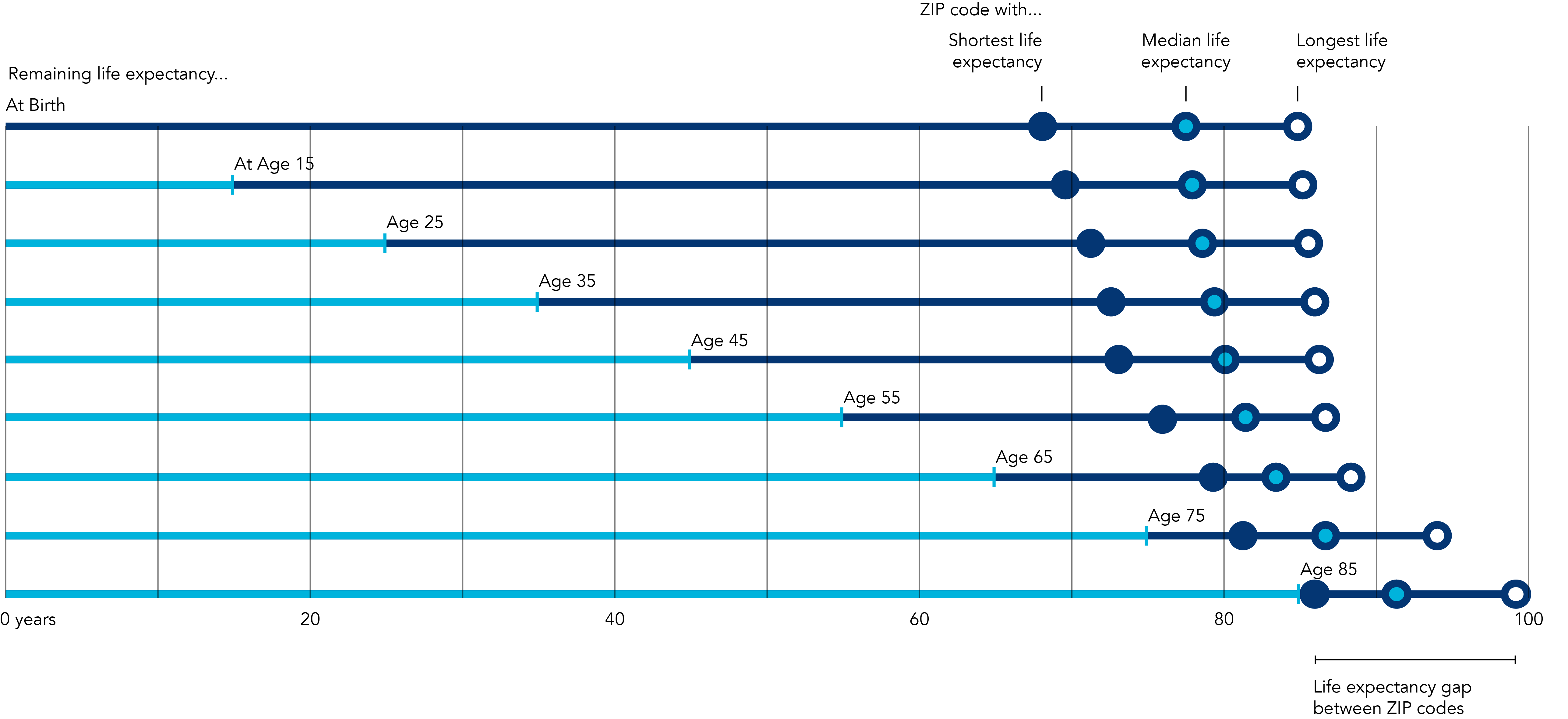Gaps in Life Expectancy Across the Lifespan
This research brief developed for the Central Indiana Senior Fund, a fund of the Central Indiana Community Foundation–the State of Aging in Central Indiana project–discusses life expectancy among older adults. Typically, life expectancy is thought of as projected total life span from the time an individual is born. However, life expectancy can also be measured for specific age groups, such as for those currently age 55-64 years. Regardless, life expectancy represents the average remaining years an individual can expect to live, whether that be at birth, at age 55, or at age 65. Key findings include:
- The gap between the longest- and shortest-living ZIP codes is highest for the most vulnerable populations: youth and older adults.
- Low life expectancy is concentrated in the core of Indianapolis from birth to age 45. But at age 75, most concentrated areas of low life expectancy are rural.
- Rural ZIP codes with low life expectancy also tend to be far from medical care, such as hospitals, community clinics, and pharmacies.
- Transportation challenges in rural communities exacerbate issues of health care access.
Read our research on life expectancy among older adults.
For more information, contact Karen Comer


